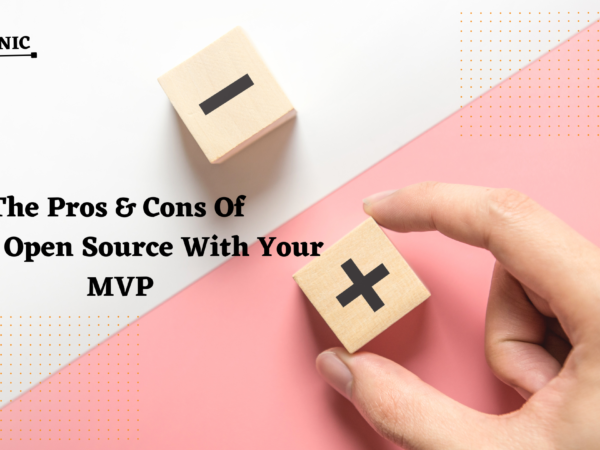Do you know how important it is to ensure that your Minimum Viable Product (MVP) services remain secure from the outset? Security must be a priority as you develop your MVP, and failing to take necessary precautions can result in customer privacy breaches, malicious attacks, compliance issues, and reputational damage. In today’s increasingly digital world, seriously taking security cannot be underestimated.
Here are some important considerations and best practices to follow when it comes to security in MVP development:
Table of content
- Thread Modeling
- Secure Architecture
- Authentication and Authorization
- Data Protection
- Secure Third-Party Integrations
- Regular Security Testing
- Error and Exception Handling
- Secure Deployment and Updates
- Security Awareness Training
- Continuous Monitoring and Incident Response
1. Thread Modeling
Incorporating strong security measures in MVP development is crucial to safeguard your product against potential threats. This is why conducting a comprehensive threat modeling exercise is vital in identifying potential security risks and prioritizing them based on their likelihood and impact. Doing so will give you a deeper understanding of the possible attack vectors and help you make informed decisions on what security measures to implement. It’s essential to follow best practices and keep security at the forefront of your MVP development process to ensure your product is protected and secure.
2. Secure Architecture
When designing your Minimum Viable Product (MVP), it’s crucial to consider the security of your architecture from the beginning. Security principles such as the principle of least privilege, defense-in-depth, and separation of concerns should be followed to ensure a secure system. Implementing secure coding practices, communication protocols, and storage mechanisms is essential to safeguarding sensitive information from potential cyber-attacks. Neglecting security measures with an MVP can lead to significant risks in the long run; instead of having to fix costly issues later on, it’s better to prioritize security from the start.
3. Authentication and Authorization
A strong authentication and authorization mechanism ensures that only authorized personnel can access the data and features. One way to achieve this level of security is by implementing robust password policies. Multi-factor authentication, which involves using more than one form of authentication, such as a password and a token, is another technique that can be used to enhance security levels. Appropriation session management techniques must be employed to maintain a secure and reliable system.
4. Data Protection
Protect sensitive data by applying encryption techniques, both in transit and at rest. Use industry-standard encryption algorithms and protocols to safeguard user data, such as personally identifiable information (PII) and financial details. Avoid storing unnecessary user data and ensure proper data anonymization where applicable.
5. Secure Third-Party Integrations
If your MVP relies on third-party services or APIs, thoroughly vet their security practices. Ensure they follow secure coding principles, maintain regular security updates, and have a solid track record for security. Validate and sanitize data exchanged between your MVP and third-party services to prevent common security vulnerabilities like injection attacks.
6. Regular Security Testing
Perform regular security testing, including vulnerability assessments and penetration testing, to identify potential weaknesses or vulnerabilities in your MVP. Conduct both automated and manual tests to assess the security posture of your application and address any discovered vulnerabilities promptly.
7. Error and Exception Handling
Implement secure error and exception handling mechanisms to prevent sensitive information leakage. Avoid displaying detailed error messages to users that could reveal system information or provide attackers with useful insights.
8. Secure Deployment and Updates
Implement secure deployment practices to ensure the integrity and authenticity of your MVP’s codebase. Utilize secure update mechanisms to distribute patches and security fixes promptly. Regularly update dependencies, libraries, and frameworks to address known vulnerabilities.
9. Security Awareness Training
Educate your development team about security best practices and provide training on secure coding techniques. Foster a security-conscious culture within your organization to ensure security is considered throughout the development lifecycle.
10. Continuous Monitoring and Incident Response
Implement monitoring tools and processes to detect security incidents promptly. Establish an incident response plan that outlines the steps to be taken for a security breach or vulnerability. Regularly review logs and perform security audits to identify and address potential security issues.
In summary
The security of MVP development cannot be taken lightly. Every software has its own risk associated with it, and several steps should be taken when developing an MVP to ensure the best possible outcome. Implementing authentication or authorization protocols within your product or creating a security audit team are some of the best practices one should consider following. Additionally, staying up-to-date on current technological changes and potential threats to the product can help secure any MVP. Ultimately, having a proper understanding of cybersecurity fundamentals is essential for successful software development. Understanding the risks involved and following the appropriate procedures will provide businesses with a secure and reliable piece of technology and will enable users to have peace of mind while using their products.









